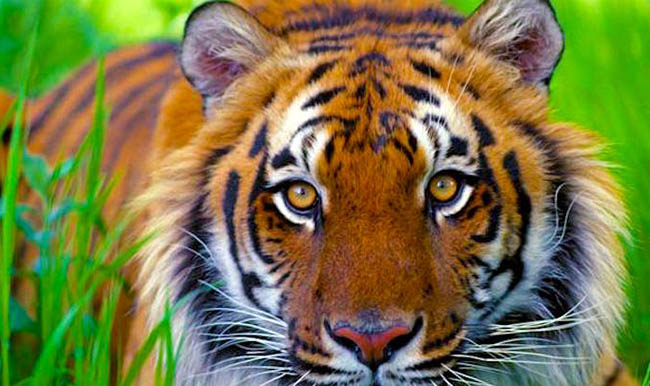The global tiger conservation efforts has recently received a big boost with significant rise in tiger populations in the Russian Far East (Amur subspecies), the Indian subcontinent (India, Nepal, Bhutan and Bangladesh-the home for Royal Bengal tiger subspecies) and parts of South East Asia; namely Thailand (Indochinese sub species), Malaysia (Malayan subspecies) and Indonesia (Sumatran subspecies). The heart-warming good news is also associated with some unfortunate bad news indicating tiger population reaching single digit numbers in south China (the South China subspecies and the Indochinese sub species) and in the Indochinese region of South East Asia (Vietnam, Cambodia and Laos) home to the Indochinese sub species of tigers. In other words, wild tiger populations have almost reached the status of extinction in the wild in case of China, Vietnam and Laos. The wild tiger population has been already declared extinct in Cambodia. Myanmar that has a substantial presence of Indochinese species of tiger is considered along with Thailand as the last wild habitat for this sub species outside China and the Indochinese region was not included in the current tiger census. The country wise tiger population presented in the global tiger census are as follows: Russia (433), India (2226), Nepal (198), Bhutan (103), Bangladesh (106), Thailand (189), Malaysia (250), Indonesia (351), China (7), Vietnam (5), Laos (2) and Cambodia (0).
Nonetheless, the significant rise in global tiger population with India representing 70% of the wild tigers of the world has created great enthusiasm and hope for successful conservation of tigers around Asia and a new initiative by Iran warranties special mention. The majestic Caspian tiger, a dominant tiger sub species once roamed across parts of Russia, China, Turkey, Iranian highlands and parts of Central Asia and Afghanistan. Unfortunately anthropogenic pressure in the form of relentless and unrestricted hunting by both members of the royal family, other aristocratic families, bureaucrats, foreign tourists as well as locals, high rate of deforestation and fragmentation of habitats and severe reduction of prey base for the predator; completely decimated and wiped out the last small and fragmented sub populations of the once dominant Caspian tigers from its homeland range completely. There are no Caspian tigers surviving either in the wild or under captive condition anywhere in the world now; although there have been few unconfirmed reports of their mystic sightings across the former range. However, there is very little or no scientific credibility to such sightings. The extinct Caspian tiger like its extant cousins, the Siberian or Bengal tiger sub species used to be one of the largest members of the cat family. Genetically, the extinct Caspian tiger has been found to be the closest relative of the Siberian or Amur tiger.
Recently some attempts were made by Russia and Iran to reintroduce lost species back to their wild habitats through captive breeding and reintroduction into the wild. Iran and Russia have exchanged some Persian leopards and Siberian tigers with one another to try and reintroduce them in each other’s territory in an attempt to bring those species back to their habitats through their closest genetic relatives. How far the attempts would be successful only time will say; however, with excellent example of the successful reintroduction of the Arabian Oryx in the Arabian Peninsula after the species was completely decimated from the region could serve as a burning inspiration to try and attempt such new introductions to enrich the faunal diversity of the region. Several conservationists have off course objected such reintroduction attempts suggesting often foreign species fail to properly adopt and acclimatize to their new environment and eventually die out due to failures in adjusting to their new ecosystem; while others have supported the drive, suggesting this is the only way to re-establish lost species in their old habitats.
The Amur tigers are the closest that can help the revival of the once freely roaming majestic Caspian tigers that are now unfortunately extinct. Afghanistan in spite of decades of destabilization, armed political struggle as well being one of the active sites of global flashpoint of armed conflicts; has survived as one of the best habitats of snow leopards in the remote mountainous regions. A similar attempt of also bringing back the ghost of Caspian tigers back to Afghanistan, side by side with Iran could be a big boost to captive breeding and release of Amur tigers in the remote northern mountainous regions or other suitable habitats within Afghanistan. Introduction of the majestic predator across Iran, Afghanistan, Central Asia, northern China, Korean peninsula can helpfully merge the ranges of the extinct Caspian tiger and extant Amur tigers over time to repopulate these premier habitats. The proposal will not only help in restabilizing the ecosystem of this vast region with the major predator slowly introduced back into the system; but will also add to the conservation value and tourism opportunities for both Iran, Afghanistan and adjoining Central Asian countries over time. As peace and stability returns to Afghanistan in the future, such initiatives could pay rich dividends in terms of earning foreign exchanges form wildlife tourists visiting the country.
Home » Opinion » Bringing the Caspian Tiger Back to Life
Bringing the Caspian Tiger Back to Life
| Saikat Kumar Basu and Peiman Zandi

